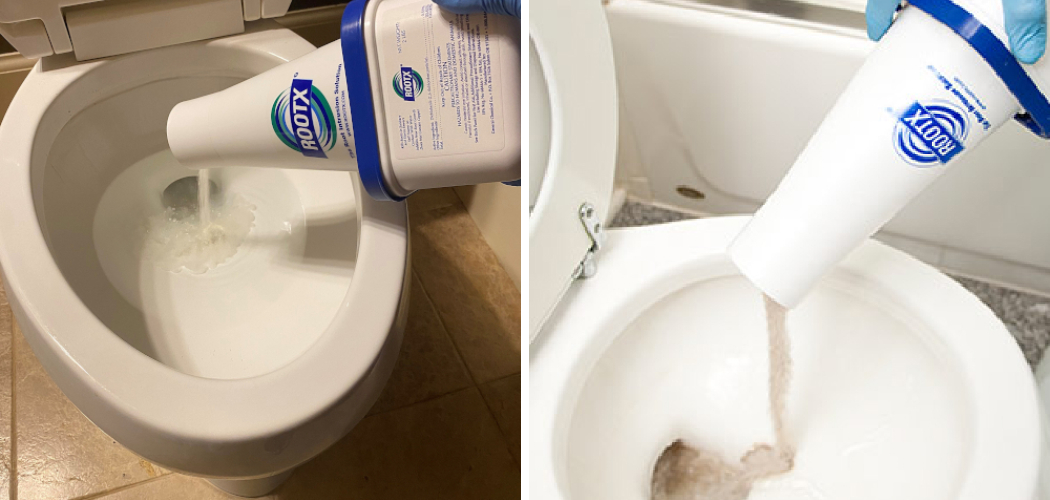For homeowners, tree roots invading sewer lines can lead to many plumbing issues, including clogs, backups, and extensive damage that may require costly repairs. Understanding how to use root killer in toilet systems is essential for managing this problem effectively. Homeowners can eliminate invasive roots and protect their plumbing from ongoing damage by utilizing a root killer.
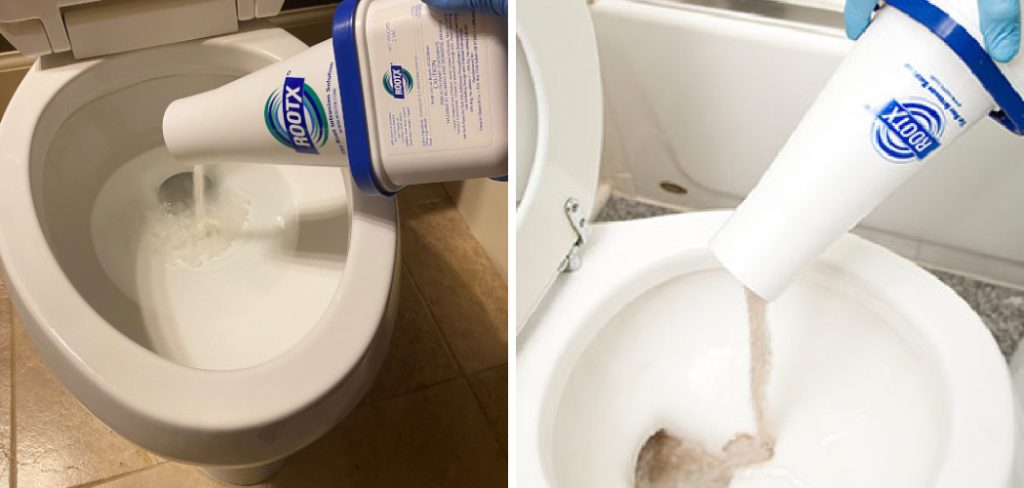
This article outlines the purpose of root killers, emphasizing their effectiveness in tackling root intrusions. It also provides a comprehensive overview of the process involved, including selecting the appropriate product, applying it correctly for the best results, and observing necessary safety precautions during application. By following these steps, homeowners can maintain clear and functioning sewer systems, thus ensuring a more efficient and less stressful living environment.
Understanding Root Killer and How It Works
What is Root Killer?
Root killer is a specialized chemical formulation designed to eliminate tree roots that invade sewer lines, primarily using two common active ingredients: copper sulfate and foaming root killers. Copper sulfate, a solid crystal substance, works by dissolving in the water within the sewer system and targeting root cells, causing them to die without negatively affecting the tree’s overall health.
On the other hand, foaming root killers expand once applied and cling to the root surfaces, delivering a potent herbicide that destroys roots while reducing the risk of pipe damage. It’s critical to choose products specifically labeled for sewer use, as these formulations ensure the safety of the surrounding environment and are effective in preventing further root encroachment.
Why Roots Invade Sewer Lines
Tree roots are naturally drawn to moisture and nutrients, often leading to sewer lines. These essential resources frequently enter through small leaks, cracks, or loose joints present in aged or deteriorating pipes. Once inside, roots can continue to grow, sometimes expanding significantly, leading to severe blockages and potential damage to the sewer infrastructure. The intricate network of roots can obstruct wastewater flow, resulting in backups, gurgling sounds, and maintenance headaches for homeowners. Regular maintenance, including the timely application of root killers, is essential to manage this infiltration, preserve the integrity of plumbing systems, and prevent expensive repairs down the line.
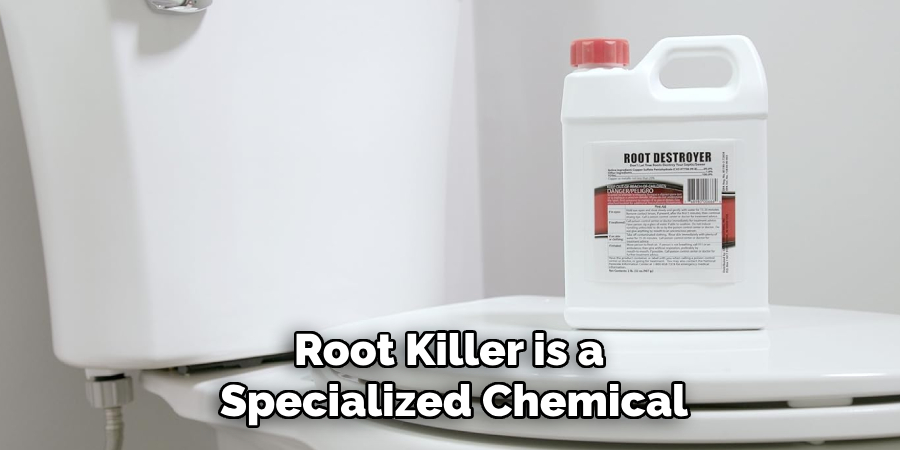
Choosing the Right Root Killer
Types of Root Killers
When selecting a root killer, homeowners typically choose between two main types: copper sulfate crystals and foaming root killers. Copper sulfate is often more affordable and effective over time, as it targets roots directly and dissolves within the sewer system. However, it might not reach all areas of extensive root growth. Foaming root killers, in contrast, have the advantage of expanding and clinging to root surfaces, allowing them to cover a broader area inside the pipes. This can make them more effective in hard-to-reach spots but may come at a higher cost and potentially involve more environmental considerations.
Selecting a Safe and Effective Product
To ensure the chosen root killer is safe for your plumbing system and the environment, look for products specifically labeled as septic-safe or designed for use in toilets. Additionally, opt for biodegradable formulations that have minimal impact on beneficial soil organisms. Reading product labels and researching ingredients can help homeowners make informed choices while effectively managing root intrusion.
Preparing to Apply Root Killer
Safety Precautions
When handling root-killer chemicals, safety is essential. Always wear gloves and safety goggles to prevent skin irritation and eye contact. Ensure that the area is well-ventilated, as exposure to fumes can be harmful. Additionally, keep children and pets away from the vicinity during application and for a period after, as they may inadvertently come into contact with residual chemicals.
When and How Often to Apply Root Killer
The best time to apply root killers is during periods of low water usage, such as at night, to maximize effectiveness. This timing allows the chemical to remain in the lines longer without being washed away. Applying root killers every 6-12 months is generally recommended for preventive maintenance, though this may vary depending on the severity of root intrusion and local conditions. Regular applications can help to maintain clear sewer lines and prevent future clogs.
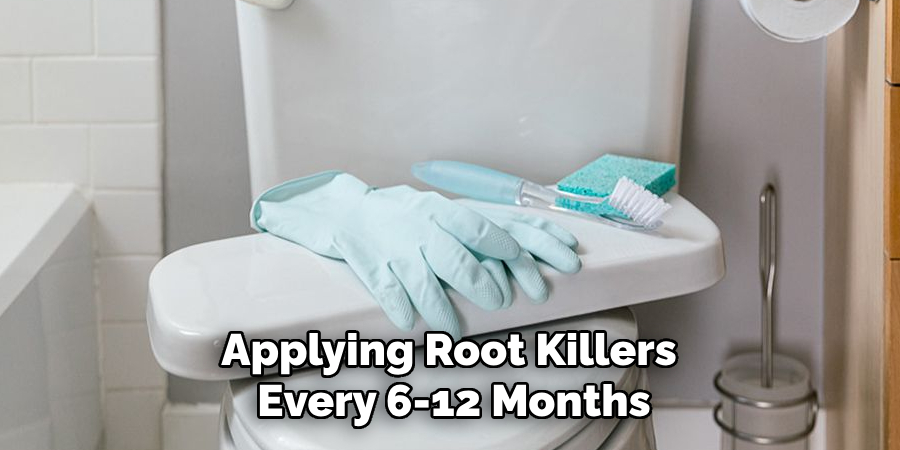
How to Use Root Killer in Toilet: Applying Root Killer Through the Toilet
Step-by-Step Instructions for Copper Sulfate Root Killer
- Measure the Recommended Amount: Begin by reviewing the product label for precise dosage guidance. Typically, a standard recommendation is to use around 1-2 cups of copper sulfate crystals, depending on the severity of the root intrusion.
- Pour it into the Toilet: Carefully pour the measured amount of copper sulfate directly into the toilet bowl. Ensure that the crystals are evenly distributed and avoid dumping them all at once to prevent clumping.
- Flush Slowly: Once the copper sulfate is in the bowl, flush the toilet slowly. This gradual flushing allows the crystals to travel down the glide path into the sewer line without getting stuck in the toilet trap. It’s essential to keep the water flow steady, ensuring the crystals dissolve adequately as they enter the plumbing system.
Step-by-Step Instructions for Foaming Root Killer
- Mix or Prepare the Foam: Depending on the product, you may need to mix the foaming root killer according to the manufacturer’s instructions. Typically, this involves adding water to a concentrate in a bucket or mixing the ready-to-use solution.
- Pour it into the Toilet: Once mixed, carefully pour the foam mixture into the toilet bowl. Make sure to cover as much surface area as possible while keeping the foam well blended.
- Flush Carefully: After pouring, flush the toilet gently. This will allow the foam to expand within the plumbing and adhere to the roots present inside the pipes, effectively treating a larger area while minimizing the risk of it getting trapped.
Avoiding Common Mistakes
When applying root killers, it’s crucial to adhere to product instructions to ensure effectiveness and protect your plumbing system. Some common mistakes to avoid include using too much product, which can lead to chemical build-up and potential damage. Additionally, flushing too quickly can cause the product to remain concentrated in one area, reducing its effectiveness. It’s also advisable to avoid applying root killers during heavy water usage periods. By timing the application correctly and following the manufacturer’s guidelines, homeowners can safely manage root intrusion without harming pipes or septic systems.
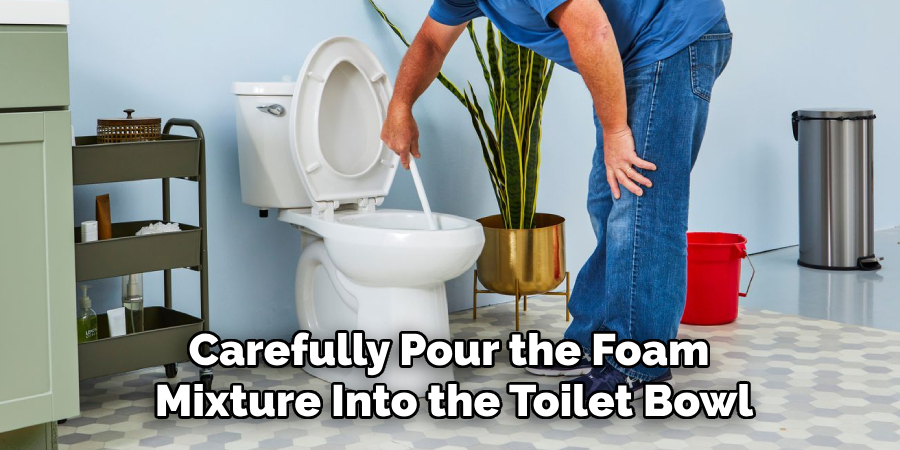
Monitoring the Results
Signs of Improvement
After applying a root killer, homeowners can expect to notice improvements in their plumbing system within a few weeks. Signs of effective treatment include better drainage, fewer clogs, and the disappearance of gurgling sounds in the pipes. As the root killer works, you may find that toilets flush more freely, sinks drain faster, and overall sewage flow becomes more efficient, indicating that root intrusions are being managed effectively.
When to Reapply or Seek Professional Help
If blockage issues persist even after the initial application of root killer, it may be time to reapply the treatment as directed, usually every 6-12 months. However, if symptoms such as slow drainage or sounds suggestive of severe clogs continue despite multiple treatments, it becomes essential to call a plumber. Professional assistance may be necessary for serious blockages or if underlying issues with the plumbing system require expert intervention.
Preventative Maintenance Tips
Regular Applications
To effectively prevent root intrusion, it is advisable to establish a regular schedule for applying root killers, particularly in areas with mature trees or prior root issues. Homeowners should consider applying root killers every 6 to 12 months, as this proactive approach can help maintain clear pipes and significantly reduce the likelihood of costly plumbing repairs. Consistent treatment not only addresses existing root problems but also acts as a deterrent against future growth.
Other Preventative Measures
In addition to regular applications of root killers, homeowners can employ several other strategies to prevent root intrusion. Planting trees a safe distance away from sewer lines is critical, as tree roots naturally seek out moisture sources. Root barriers can also protect pipes by deflecting roots away from vulnerable areas. Furthermore, scheduling regular inspections of your plumbing system by a professional can identify potential issues before they escalate, ensuring the longevity and efficiency of your plumbing infrastructure.
Environmental Considerations and Alternatives
Environmental Impact of Root Killers
Chemical root killers can pose significant environmental concerns, particularly regarding groundwater contamination and the potential harm to beneficial soil organisms. When these chemicals enter the soil or pipes, they may leach into the water supply, affecting both aquatic life and human health. It is crucial for homeowners to use such products responsibly, following manufacturer guidelines and ensuring proper disposal to minimize the impact on the surrounding environment.
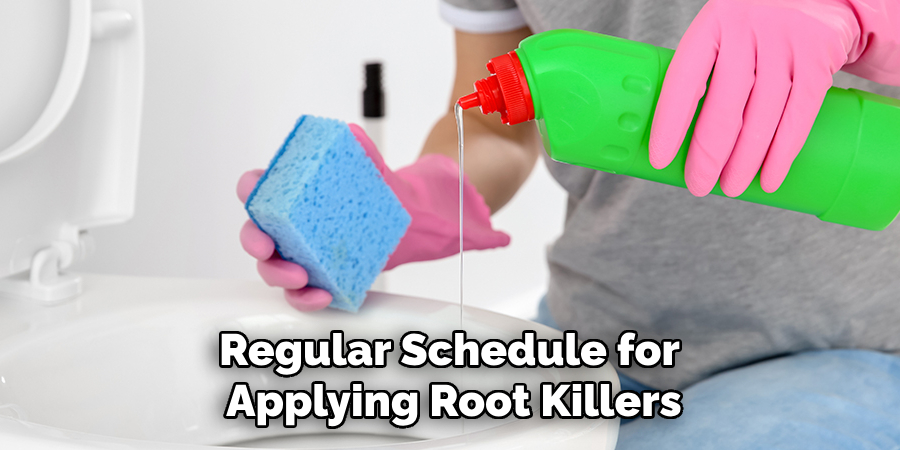
Natural or Mechanical Alternatives
Natural or mechanical alternatives can be highly effective for those seeking more environmentally friendly options. Enzyme-based treatments break down organic matter naturally and are less harmful to the ecosystem. Hydro-jetting uses high-pressure water to clear root intrusions without chemicals, ideal for severe blockages. Additionally, manually removing roots with a plumber’s snake can effectively eliminate the problem while avoiding chemical use. These alternatives are particularly appropriate in sensitive areas or when looking to reduce environmental impact.
Conclusion
In summary, knowing how to use root killer in toilet systems effectively involves several critical steps: first, selecting the right product suitable for your specific plumbing conditions; next, preparing and applying the root killer correctly to ensure even distribution; and finally, monitoring the results to assess the treatment’s effectiveness. For optimal success, it is essential to follow the safety precautions outlined by the manufacturer and maintain a regular treatment schedule every six to twelve months.
Additionally, considering the environmental impacts of chemical treatments can lead to more sustainable practices. By following these guidelines, homeowners can significantly reduce the risks associated with root intrusion and protect their plumbing systems from costly repairs, ensuring a well-functioning drainage system for years to come. With proper care and attention, root killers serve as an effective solution in managing and preventing root issues.

